October 4, 2015
Martha O'Kennon
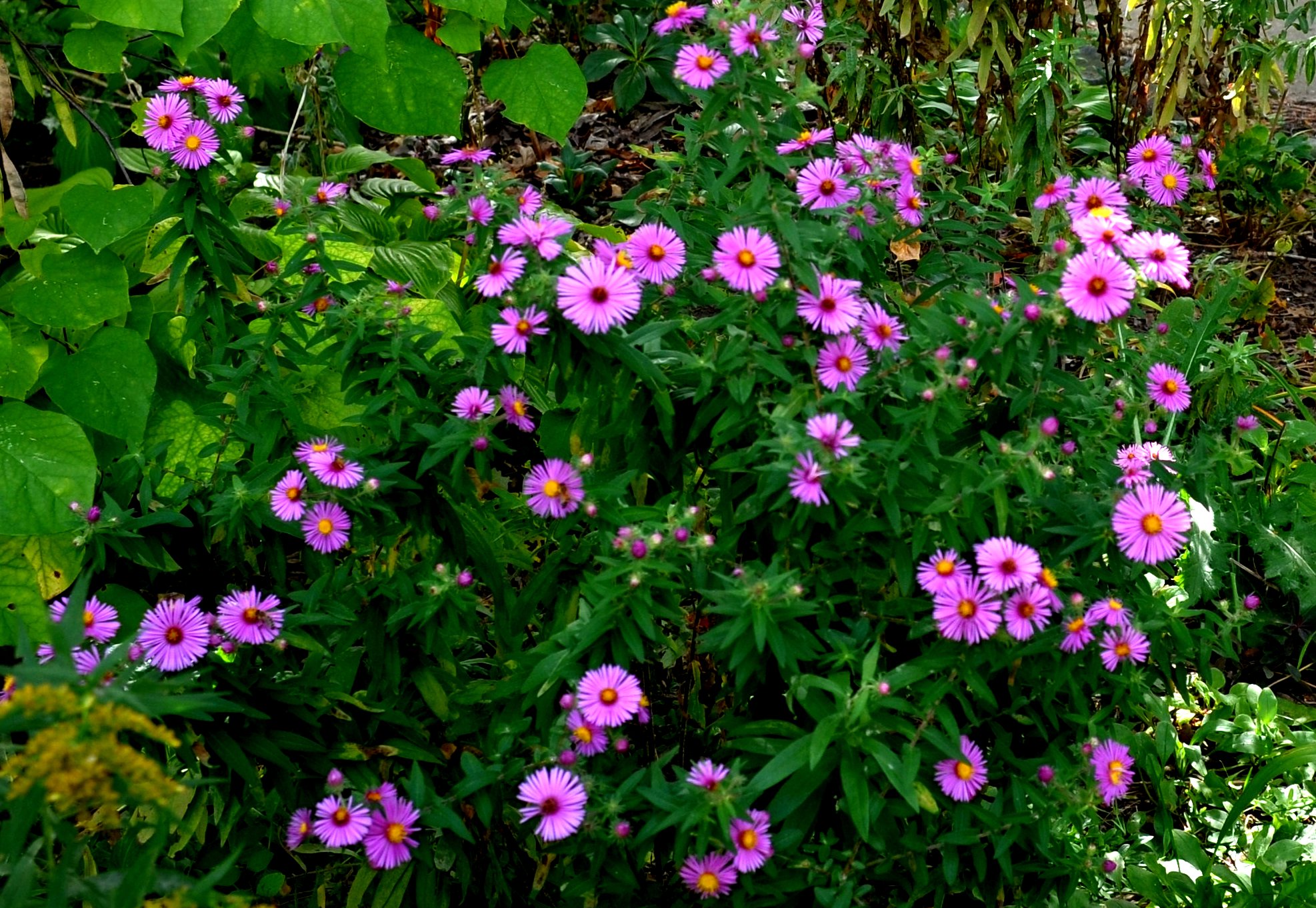
You know it's really fall when one day you have to get out your sweatshirts and similar cool-weather duds. But the good thing is that the asters have come and some of the plants still have blossoms and even some buds left. This is one of the mauve ones. You can zoom in and see some of the little things (at least one little honey-bee). In the morning the flowers are still all folded up, some with a bee or fly or other visitor cuddled within. As it warms up, these little creatures do too and they then pick up on the nectar they were still enjoying the night before or fly gently to another blossom. By noon or a little after, the blossoms that aren't superannuated are wide open and attracting more and more bees or flies.
Remember that there is information in the name of the file for each image. You can see it by mousing over the image - look at the lower left of the screen.
I would try clicking on the image. If the little "+" sign appears, it means you can enlarge again. While it is in "+" mode, click on something you want to see more clearly and it will zoom to that section. Then the info is displayed in the address line above. If the image has been cropped
so that clicking on it doesn't result in a larger picture, you can always hit control plus to increase the size of the image.
The faithful bugs are still in evidence. The most common one is the Lygus plant bug that inhabits the goldenrod until the bitter end. This little bug is one of many species, and so small (only a very few mm) hence so hard to identify, but I love the subtle decorative "moons" (two on the end of the wing) and then two others on the abdomen just uncovered from the wing.
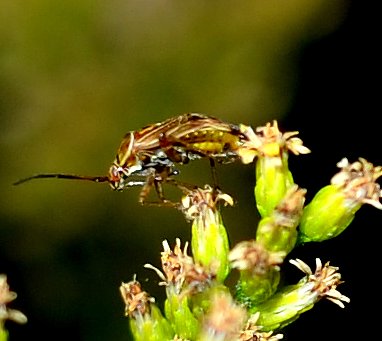

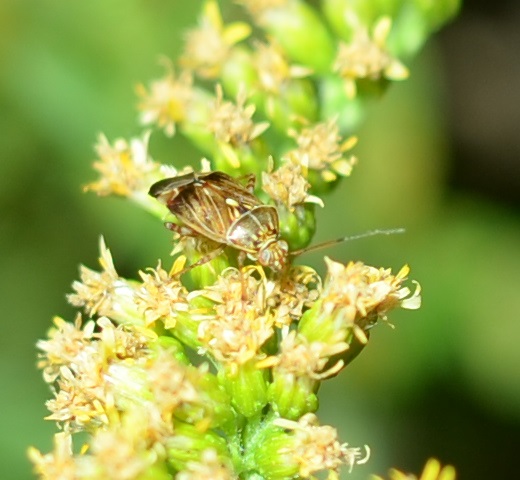
Another plant bug that inhabits the goldenrod at this time of year is this black-and-brown one. Of course you can still see quite a few little candy-stripers. Last year I saw this little red and black "twice-stabbed stink bug" only at the Nature Center, but this year at least one has moved in.
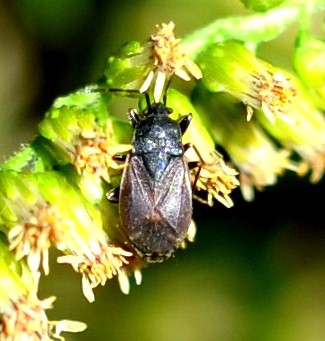
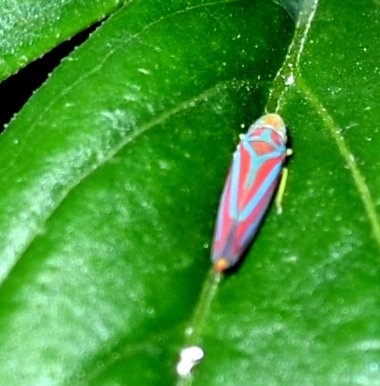
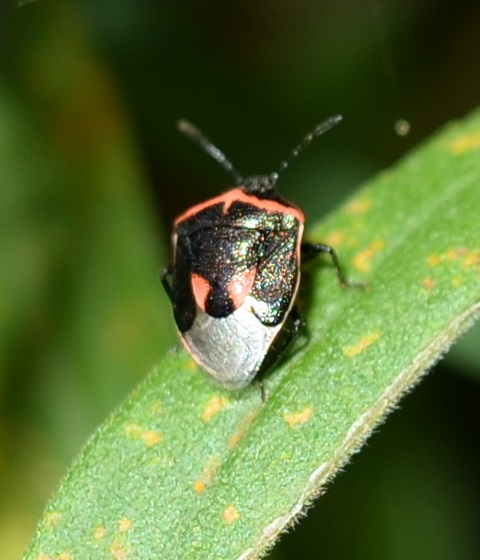
Another good-sized stink bug and that spittlebug that I've been trying to identify all summer - must get serious with that!
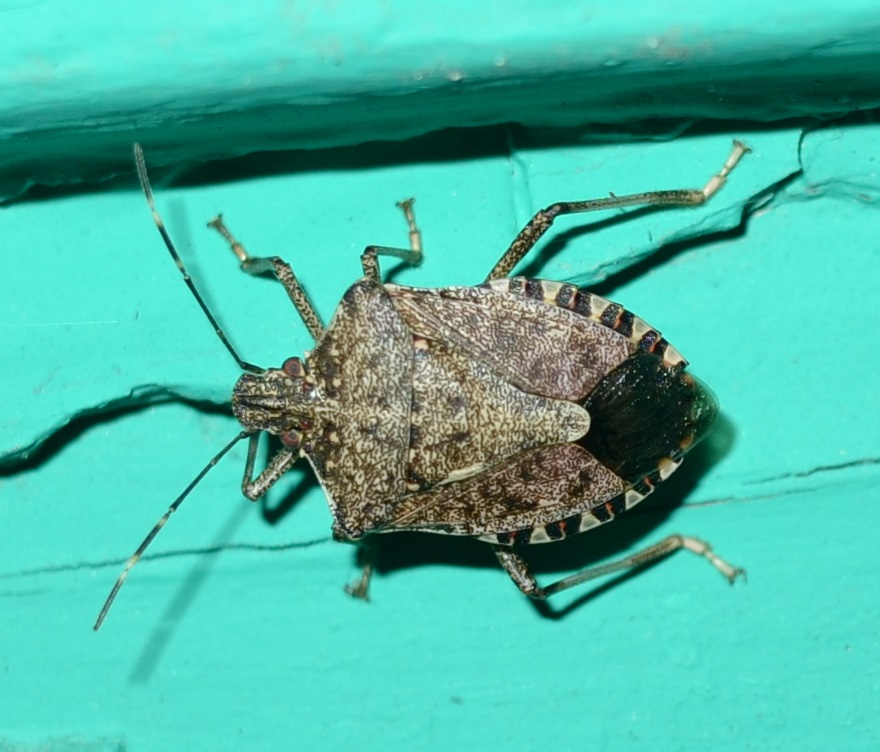
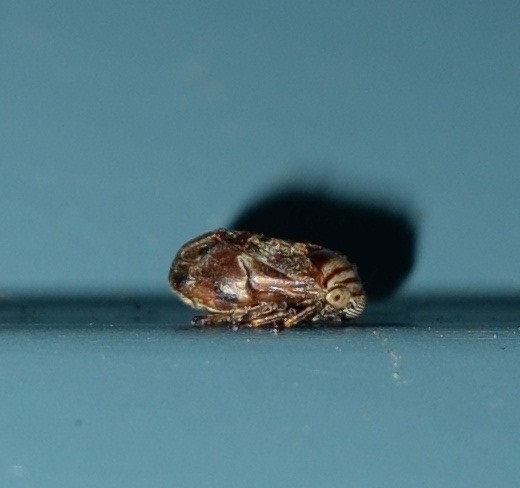
Among wasps, I've only seen close enough to identify (or better yet to enlarge later and identify)) a couple of species of Vespula. You remember last week when a little downy yellowjacket became intoxicated on corn? Well, this week one day I found one of these on the stairs leading to the second floor. I scooped it up into a clear jar and took it outside. It seemed very weak. Knowing how much the other one had liked corn, and having some in the fridge, i made it a paste of masticated corn and within seconds it had moved toward the corn and started moving its mouth into it. But when I was cropping the photos, it appeared to be not a downy worker but a German yellowjacket male. Early yesterday morning I found another yellowjacket frozen to an aster stem. It turns out to be yet another variation of V. germanica male. To me they look entirely alike and I would have gaily called it V. flavopilosa. Moral: always check, if possible and convenient. Sorry to say I couldn't get a facial image since by the time I had sidled around him he was on the move and never with his face to me.

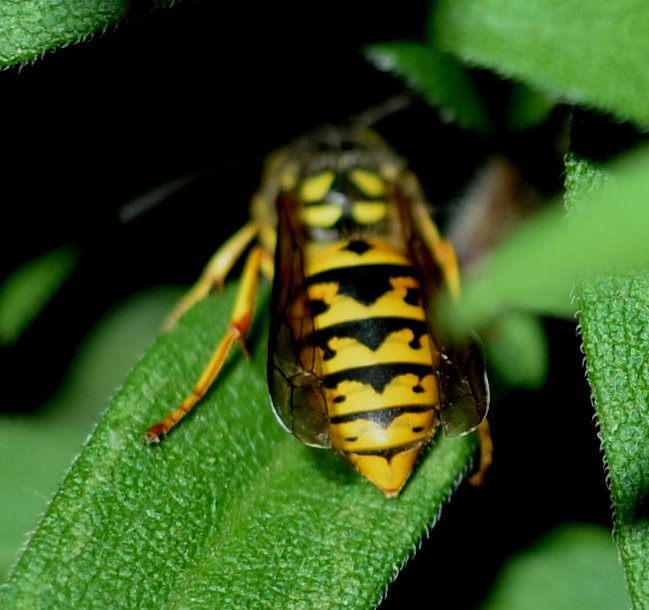
Bees were still buzzing busily. Here is a very small bumblebee, one of the very tiny ones that may be one of the genders of the common bumbler. The middle bumblebee must have hung onto this leaf all night. Here is one that looked surprised to have that big black shiny eye pointed at it.
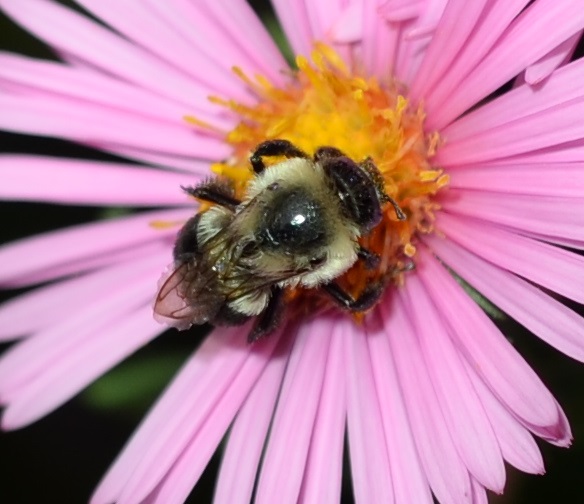
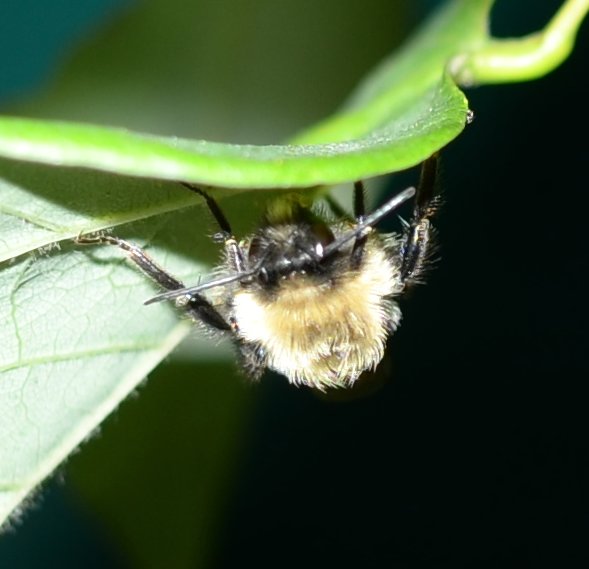

Other hymenopterans- other bees, ichneumons, and ants - are still around. This little honey bee was enjoying its aster. The ichneumon on the porch ceiling was taken from the floor. I held the camera as still as possible with my arm as straight as possible these days - no room or visual to focus much - so it is lucky this came out as well as it did. Here is the picture taken on April 18. Strange to see it in April and not again till October. Maybe they have been hiding in full view.
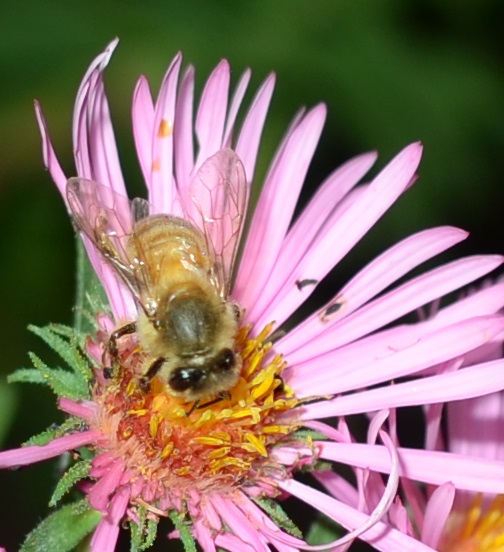
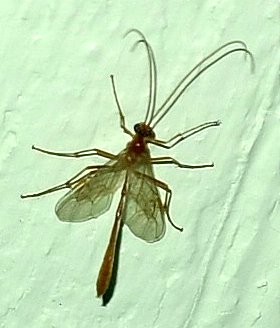
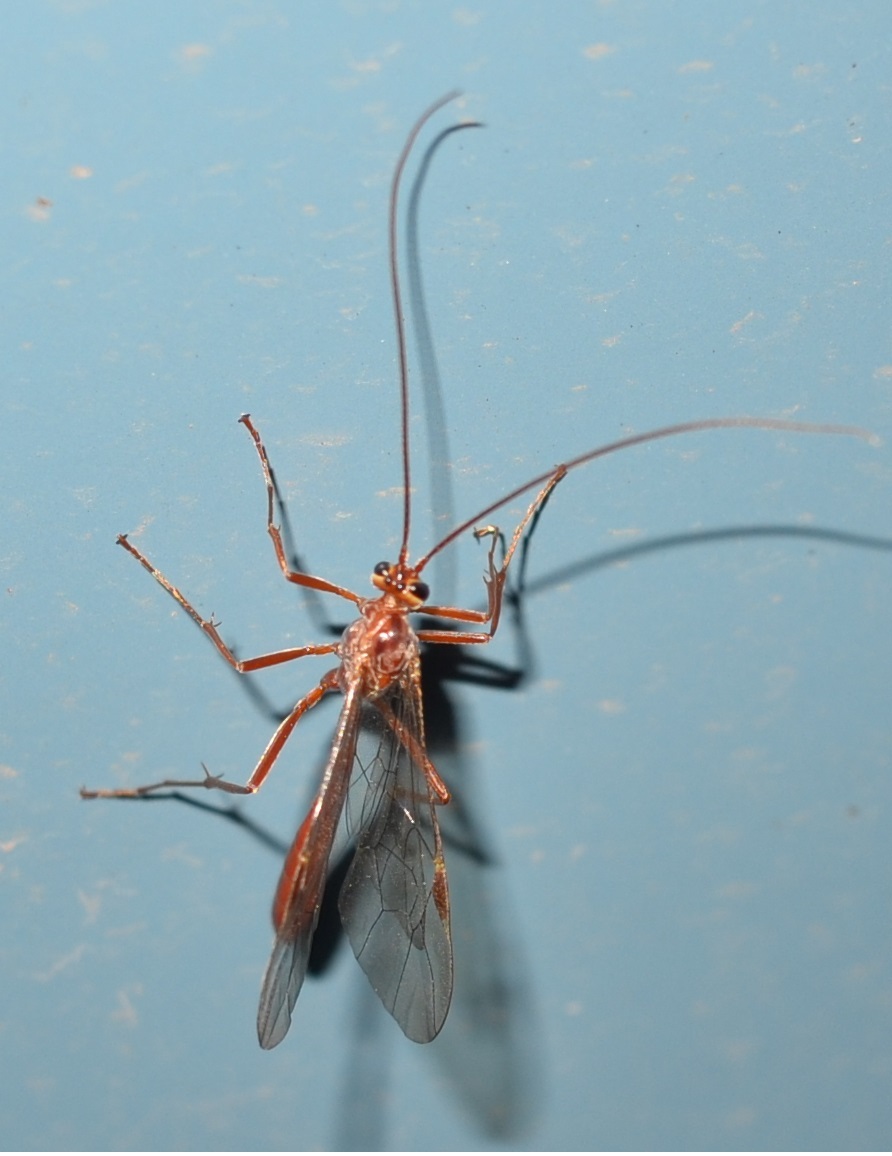
Oh - I promised you one ant picture. I wonder what this little fellow is looking at down that chasm. The second image is of a winged ant or a braconid wasp or an ichneumon wasp. Sorry to say I haven't identified it yet.

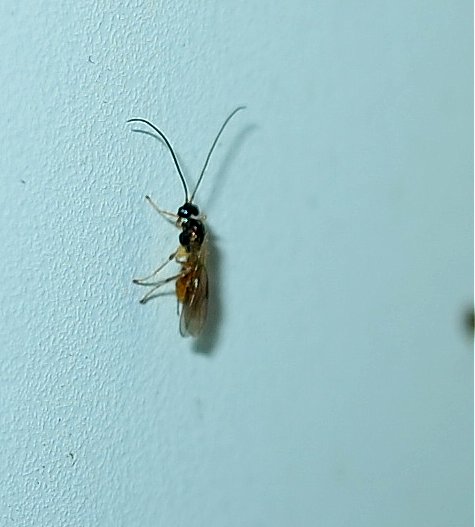
These two characters have something important in common. Earlier I identified the second one as a scale insect. it is only about 3-4 mm in any direction, and seems to be plastered against that wall. If you reasoned: "Well, the first one is a potato bug, which is a beetle, so maybe the other is (in someone's sick imagination) also a beetle" you would be right. That amazing piece of protoplasm is in fact the so-called "tortoise beetle".
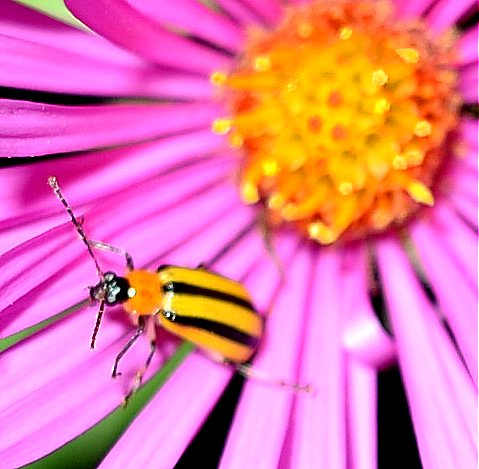
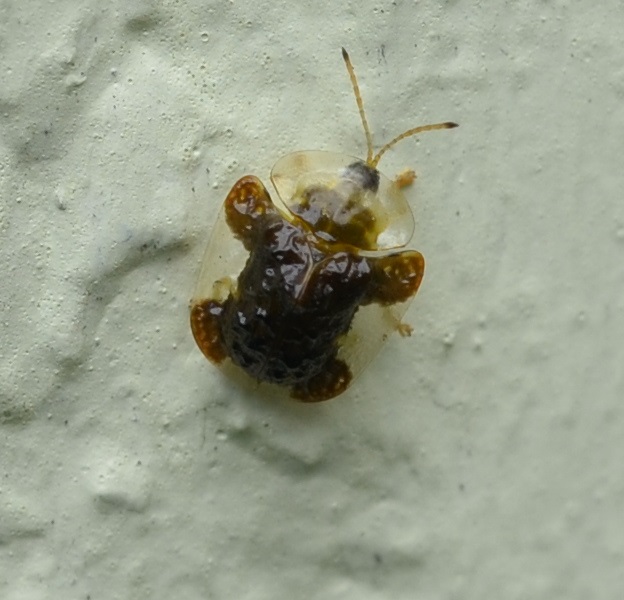
For flies, we had a goodly number of crane flies, mostly small and maybe all the ones I snapped are the same species, but IJDN (I just don't know). The patterns on the thoraces are not noticeably similar, although the red spot on the second one's thorax COULD be discolored from some sort of friction. They were about the same sizes.
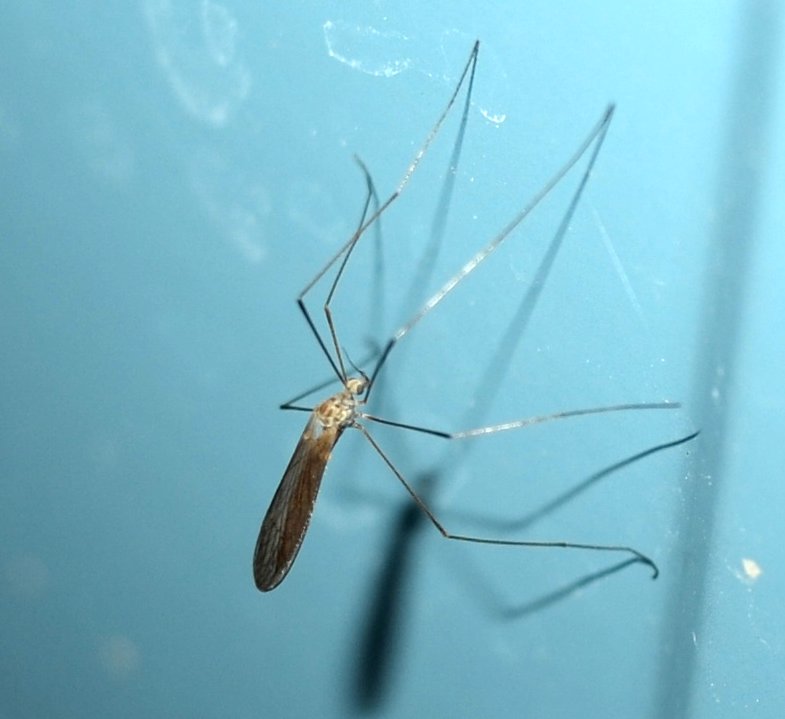
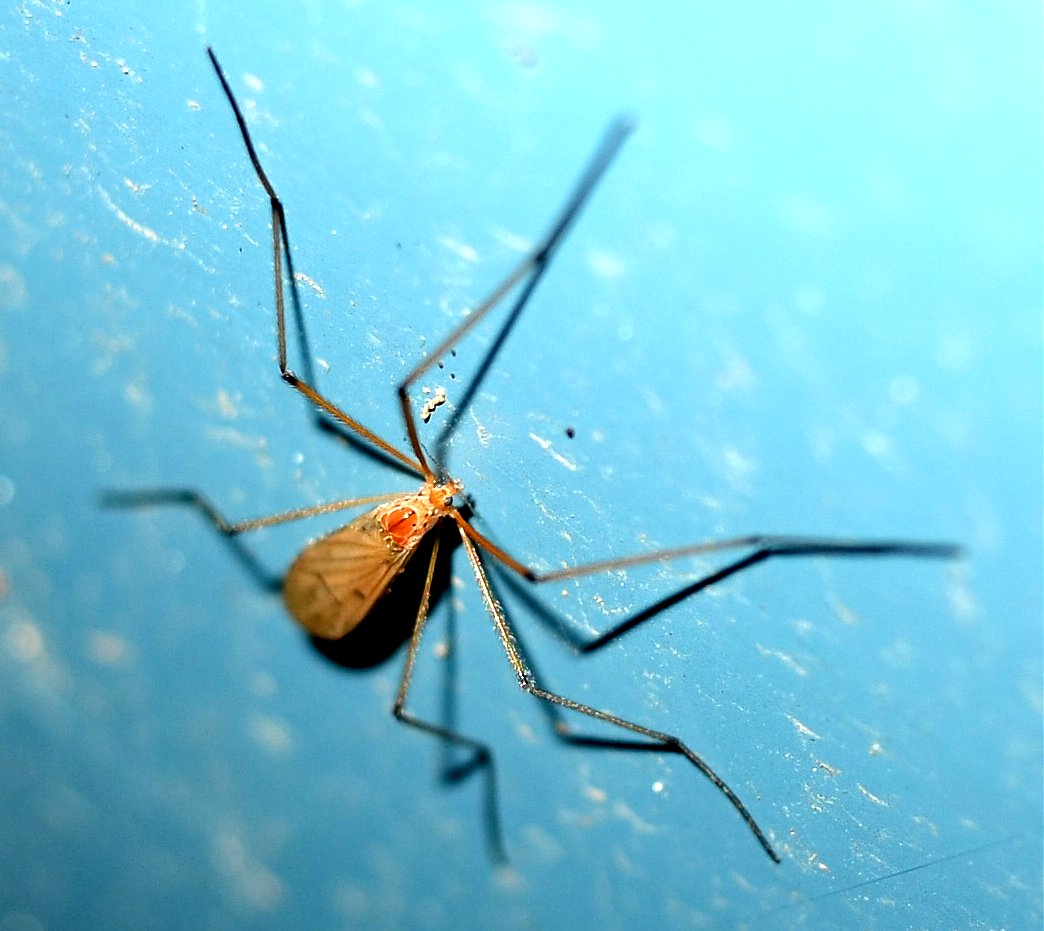
Remember when we discussed sexual "dimorphism" ? It occurs when the male and female of a species look markedly different - in coloring, structure, pattern, for instance. I had gotten the picture of the female of the Eristalis transversa hoverfly, but had never see a male. Well, on September 24 I finally saw the male on an aster. In fact, a female was found gracing this aster a couple of days later. So now we have the pair. Can you see which is the male and which is the female? If you said, "The one on the left has big eyes touching in the middle of the forehead, so it is probably the male", you would be right in this situation. Even though you cannot see the eyes well on the second one, you could get a lot of points from me since "male" has already be taken. So the left is the male and the right is the female (head down and out of sight) on the native white aster.
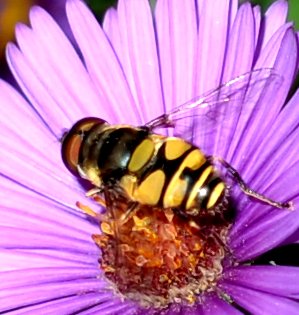

In my fiendish obsession with hoverflies, I didn't spend much time looking at the others that were around. But here are another couple of non-hover flies. I THINK the first is a fly, for which I will owe you an identification one day soon, I hope. It has lost one long leg but seems none the worse for wear. The second is a relative of the housefly, and seems to be covered in some sort of debris, maybe pollen. There was also this picture-winged fly.
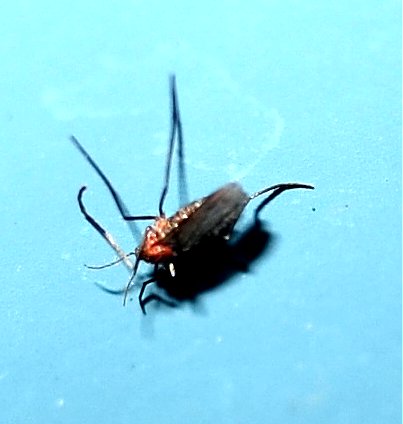
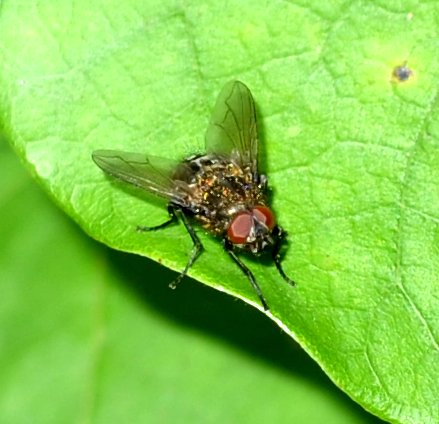
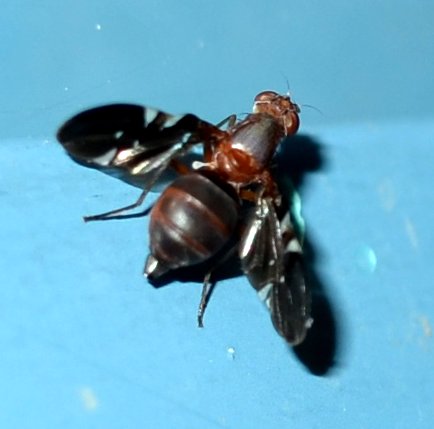
Butterflies are scarcer, though the occasional white cabbage butterfly comes in to snack at an aster. We did have this looper, or inchworm, the larva of one of the geometrid moths. I think I'll group it with this next one, which is one of those larvae in a pebble case. Here it is dragging its house up the side of the workshop wall. I always forget to go back and see where it went, and this time is no different.
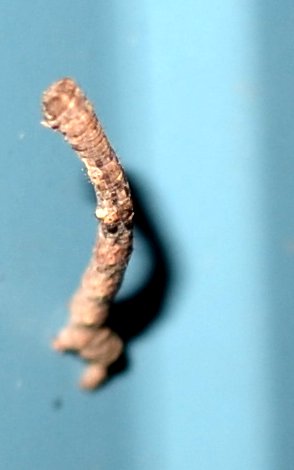
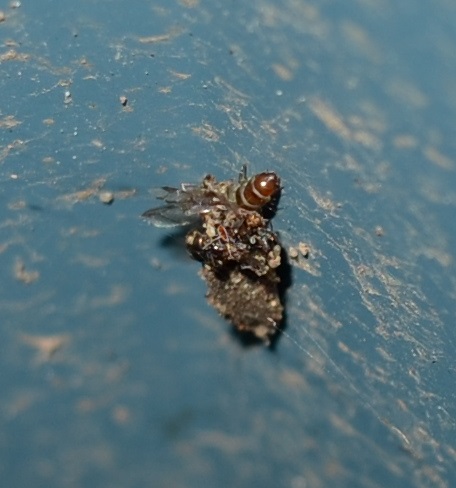
The spiders are definitely out there. I spent a little more time and discovered not only more spiders but also some orb webs. The trick seems to be to look over a planting and see if you can see a bit of leaf or other light object suspended above ground. You then snap a picture of the floater and sometimes, just sometimes a web that was invisible before shows up subtly. That's how I got the first picture. And do you remember how I was hoping to see one of those long-jawed spiders that were so impressive last year next to the pond? Well, just a few days ago, I suddenly saw one - a tiny little one, but I took the best picture I could. In both these pictures, the lovely web orbs showed up suddenly While I was cropping the images. It wouldn't hurt to zoom in just to see the web better.
Conclusion: not all long-jawed spiders live next to the pond.
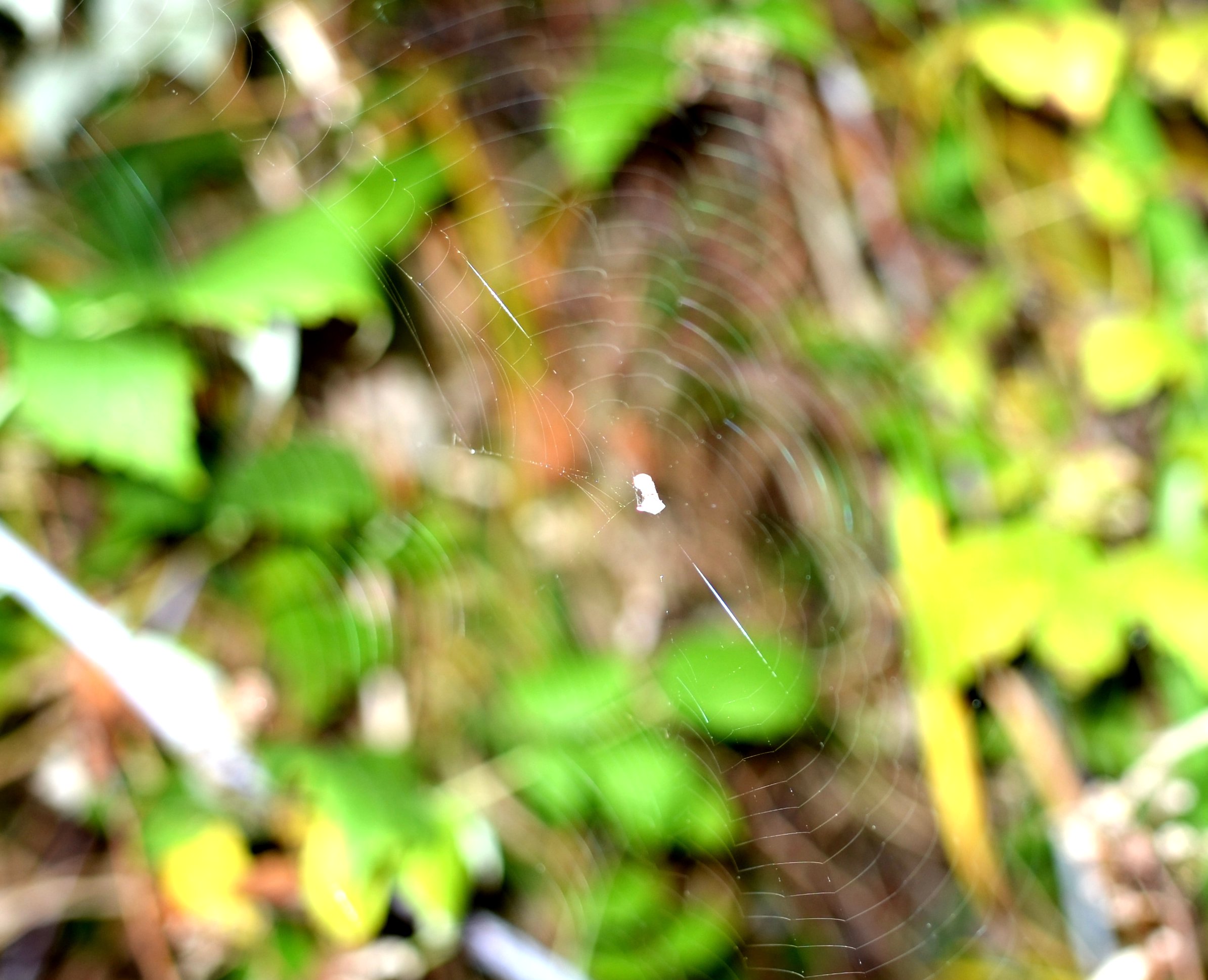

About a day or two after finding those two webs, I discovered in the fold of a redbud leaf, a tiny spider hanging in the air. While cropping the pictures, I found that it was actually a spider we know from last year about this time - a six-spotted orb weaver. Now the spider itself was so small it didn't have much of a web yet, but I'm sure it will be making a lovely orb soon. You couldn't see the 6 spots from this first picture, as it is a tummy view (or ventral view). But from the side and from partly behind, you can see the tell-tale spots.
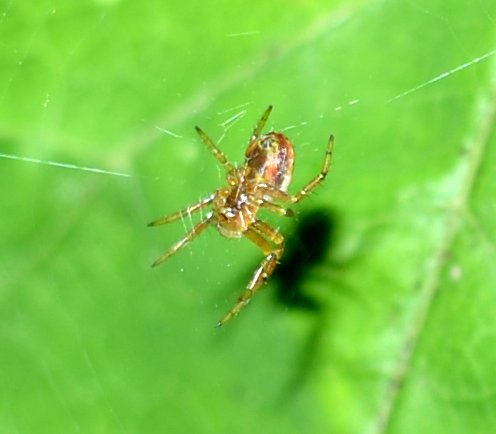
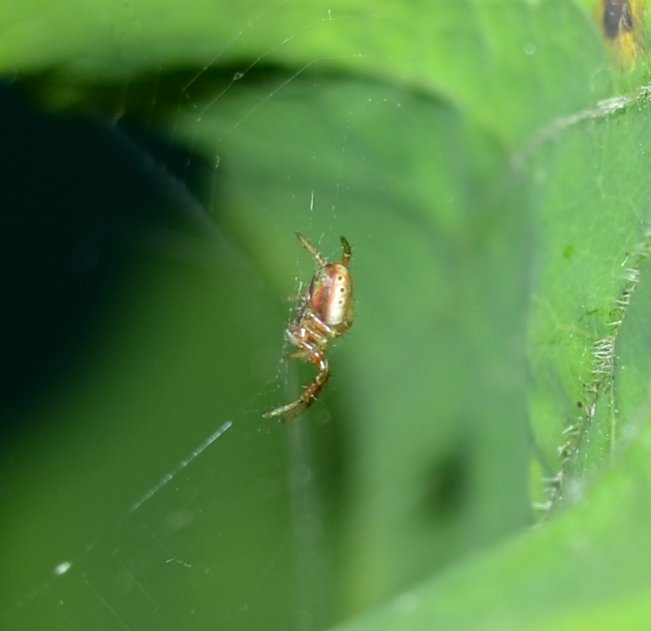
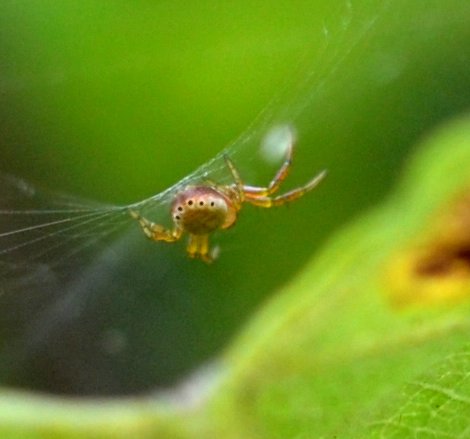
This white-speckled black spider was new to me - so was this chocolate-bean one, which turns out to be the cobweb spider. Usually they are much smaller, though I must say I'd never seen this one before. Maybe it's like the common house spider, which I've never seen indoors before. The cobweb spider may be the one bothering the common house spider, who is standing by her egg cases, one of which has hatched into a plethora of tiny spiders. This may be a mating pair.

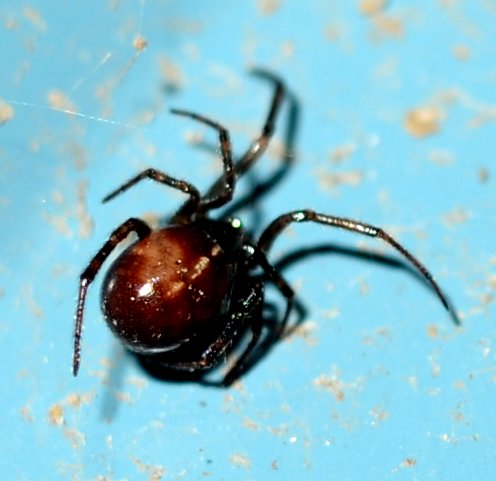
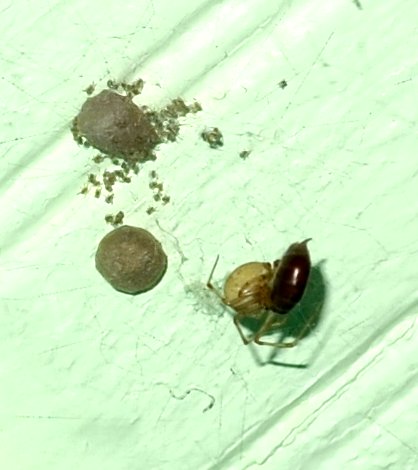
The jumping spiders (I saw two the other day, in different places) really do jump from place to place, making themselves very hard to focus on.
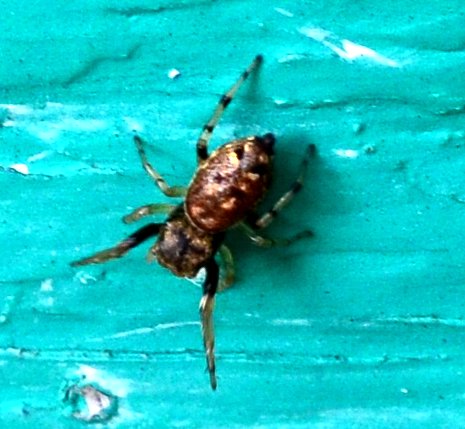
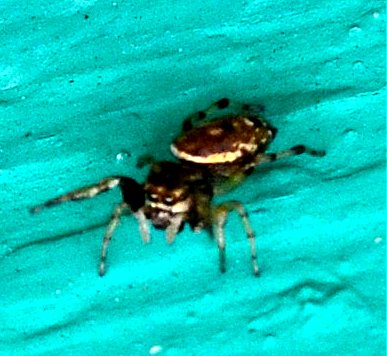
It is easy to spot a grass spider with its "funnel web" - just look at almost every plant! They are the most visible now. A creature touches its web and out the hole comes the spider. Here is a young one in an aster blossom. But you know who I really love - the little crab spiders. They also like to sit in the middle of a flower waiting for company, like this little female. This is better than most of my images of tiny things, so you can see her smallish palps. You can also make out her bright little yellow eyes, just zoom!
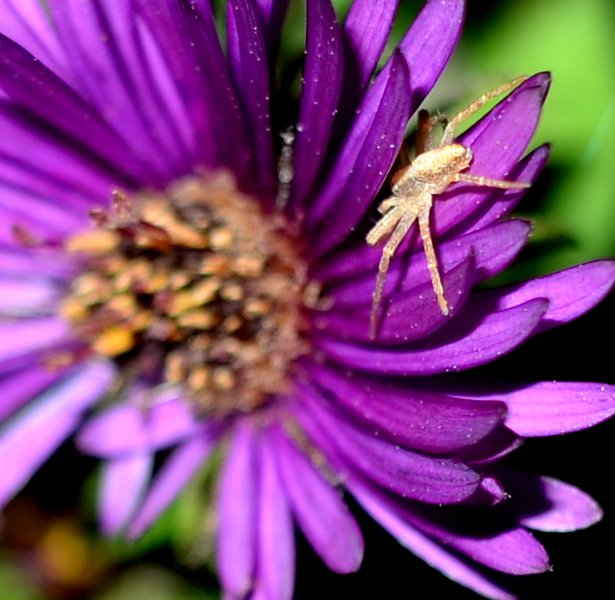
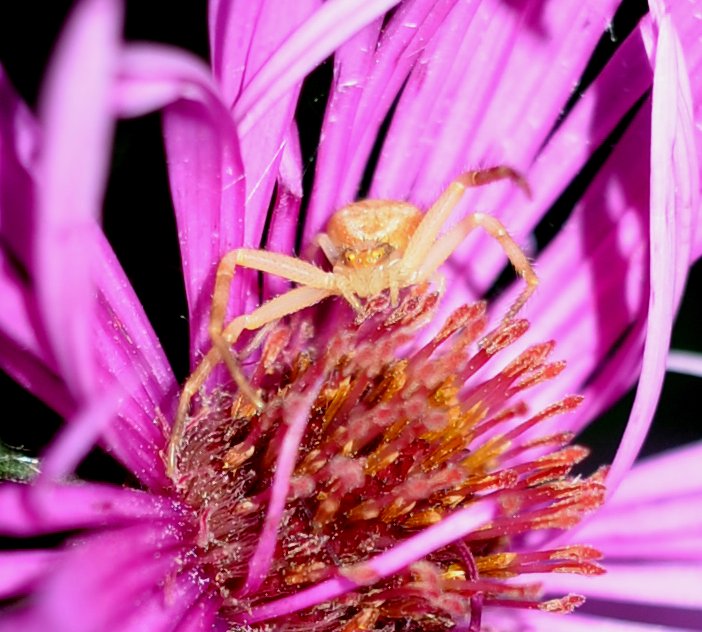
I'll leave you with this one - a crab in the middle of a cluster of goldenrod flowers. See how her legs have turned green to blend in with the faded flower picture. How bright they are (the pinkish spider and the yellowish blossoms) even after the blooms have begun to fade.
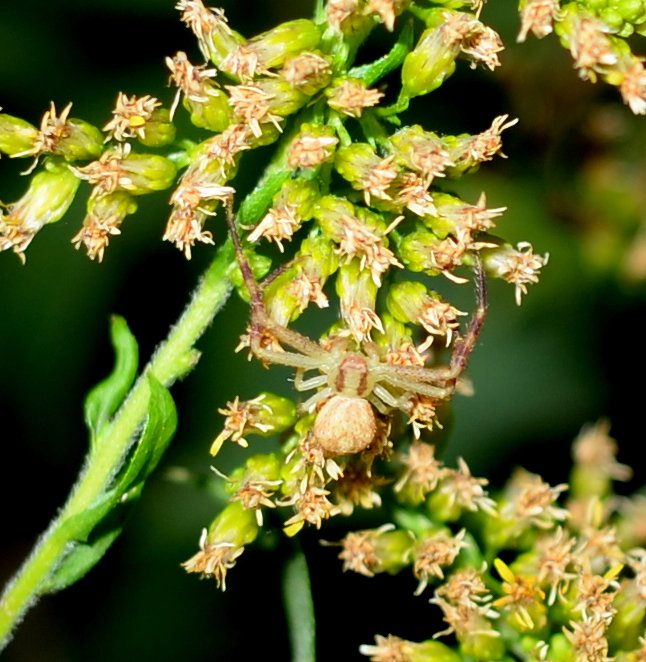
Maybe, for you, fall is the beginning of winter. I sometimes see it as the end of summer. Last year it extended itself over and over into the early days of November. So it isn't time yet to pull the covers up over the "bug year". I'll definitely see you next week! (Well, definite means "the cat doesn't trip me" or "i don't trip over all the stacks of stuff that I am trying to sort", things like that.)
OH! If you missed the eclipse of the moon the other day, you can watch it
here
Back to September 27
On to October 11
Back to 2015 menu
Back to main menu
copyright Martha O'Kennon 2015










































